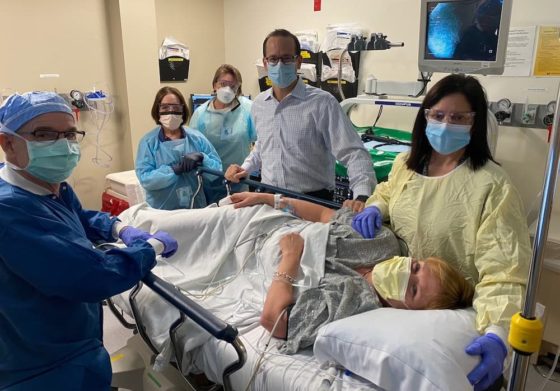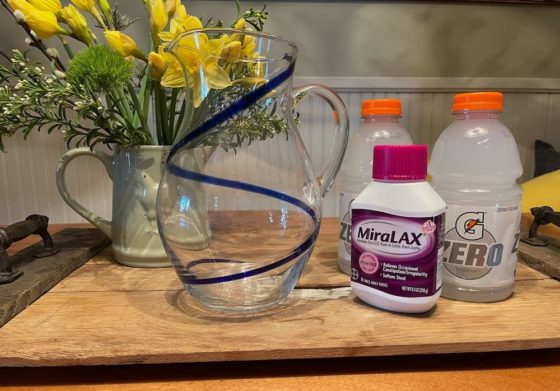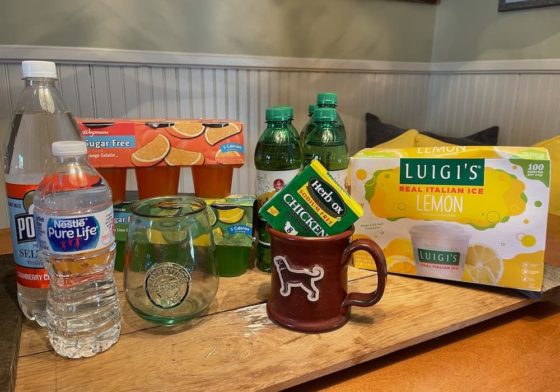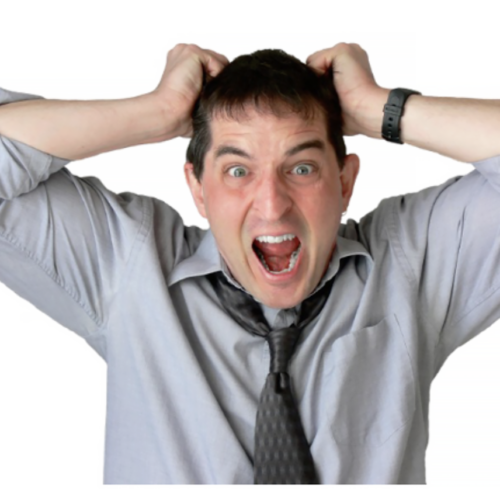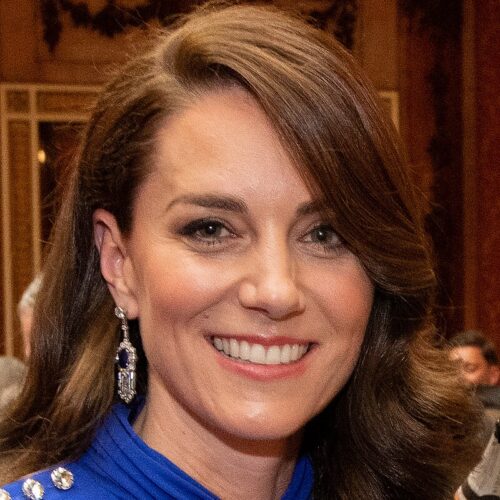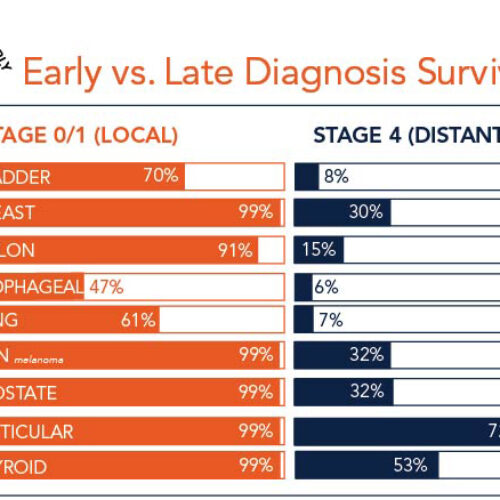Amy Kotsopoulos is DetecTogether’s Creative Director & Web Designer.
At DetecTogether, we practice what we preach. We know our “great,” we follow the 2-week rule, and, when something is amiss, even subtly, we call our doctors. Part of knowing and maintaining your great includes getting your routine screenings.
Did you know that there are over 200 types of cancer, but only four effective screening tests to detect cancer in its earliest stages? The often maligned colonoscopy is one of them.
When it comes to cancer, the adage “an ounce of prevention is worth more than a pound of cure” rings especially true.
The colonoscopy typically elicits fear and embarrassment when in actuality, it really is not that bad. The procedure itself is a piece of cake.
How do I know? As I write this, I have just returned home from my own routine colonoscopy. I am sharing the details of my experience to allay any misconceptions so that you don’t delay your own screening. Because when it comes to cancer, a delay can literally mean the difference between life and death.
I don’t think the colonoscopy will ever make anyone’s Top 10 list of favorite things to do, but if you shift your perspective and understand what it actually does, you quickly come to appreciate the gift it offers.
According to the American Cancer Society, colorectal cancer is the second most common cause of cancer death in the United States when men and women are combined. However, regular screening, recommended to start at age 45, can find colorectal cancer when it is small (before you experience symptoms), hasn’t spread, thus making it easier to treat and providing a better outcome. A colonoscopy has the added advantage of removing pre-cancerous polyps during the exam before they have a chance to turn into cancer.
The colonoscopy’s bad rap is probably due in large part to the prep needed before the exam. But, those 24 hours of inconvenience are nothing when compared to hearing your doctor tell you, “You have cancer.”
I was prescribed a clear liquid diet on the day before the screening—think black coffee, tea, chicken broth, jello, popsicles. Pretty much anything you can see through and is not the color red, blue or purple. Then came the prep.
I decided to have a little fun with mine. I mixed my bottle of Miralax and two bottles of sugar-free Gatorade in my prettiest drink pitcher, set out a matching glass and pretended to have a cocktail party over the next two hours. I even paid homage to my wonderful GI doctor by dubbing his concoction the Maykel Mocktail.
Eight full glasses of the Maykel Mocktail does pack a punch. About two hours after my last glass, things began to move fast, and the next three hours were spent near the bathroom.
With the prep out of the way, the easiest part was to come.
I arrived for my appointment at 7:00 a.m. (Quick tip: I would recommend scheduling the earliest possible appointment on a Monday. You don’t have to miss a day of work, can start your prep at 4:00 p.m. and still get in a night’s rest.) The medical staff was incredibly professional and kind. An IV line was started, and I was soon wheeled into the procedure room and given light sedation. The next thing I remember was my nurse gently nudging me awake. Total time from arrival to pick up was one and a half hours.
During my colonoscopy, a small polyp was removed. I’ll need to return in five years for my next screening, but I left knowing that a potential problem was prevented from becoming a much bigger one.
When it comes to cancer, the adage “an ounce of prevention is worth more than a pound of cure” rings especially true. If you are 45 years old or have delayed your own screening because of fear, embarrassment, or COVID, call your doctor today and get your colonoscopy scheduled. The opportunity to prevent or have your cancer diagnosed in its earliest stage is truly a priceless gift.
